Ranked: US markets with the highest home insurance premiums
10 high-risk regions with the steepest premiums
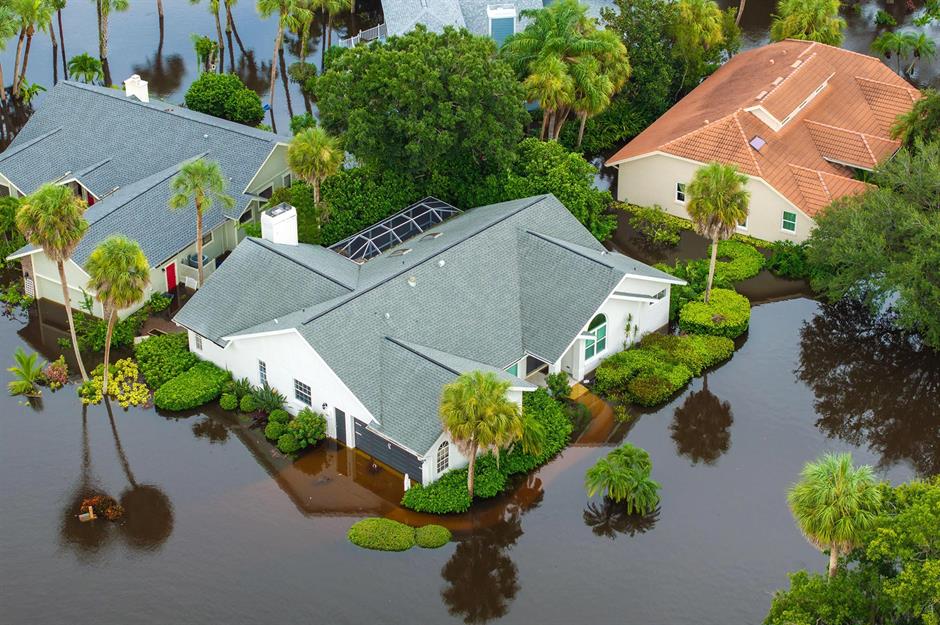
As climate risks intensify and rebuilding costs climb, homeowners across the US are feeling the pinch of rising insurance premiums. But in some housing markets, the burden is far heavier than in others. From hurricane-prone coastal regions to inland areas facing severe storms, flooding, and coastal erosion, data from Realtor.com has revealed 10 regions across America where homeowners pay the most for insurance relative to their property values.
Click or scroll on to discover the high-risk markets where homeowners are being hit the hardest...
Data and methodology

This article draws on data from Realtor.com's 2025 Housing and Climate Risk Report, which combines its own home valuation data with insurance rate information from Insurify, a digital insurance agency and comparison platform.
The analysis focuses on the median annual cost of an HO-3 homeowners insurance policy for a single-family frame home, provided the owner has good credit and no claims within the past five years. Policy assumptions include dwelling coverage aligned with the home's value, personal property coverage equal to 75% of the dwelling coverage limit, $300,000 in liability protection, a $1,000 general deductible, a 2% deductible for hail damage, and a 5% wind or hurricane deductible.
10. Houston-Pasadena-The Woodlands, Texas: 1.5% premium-to-market ratio
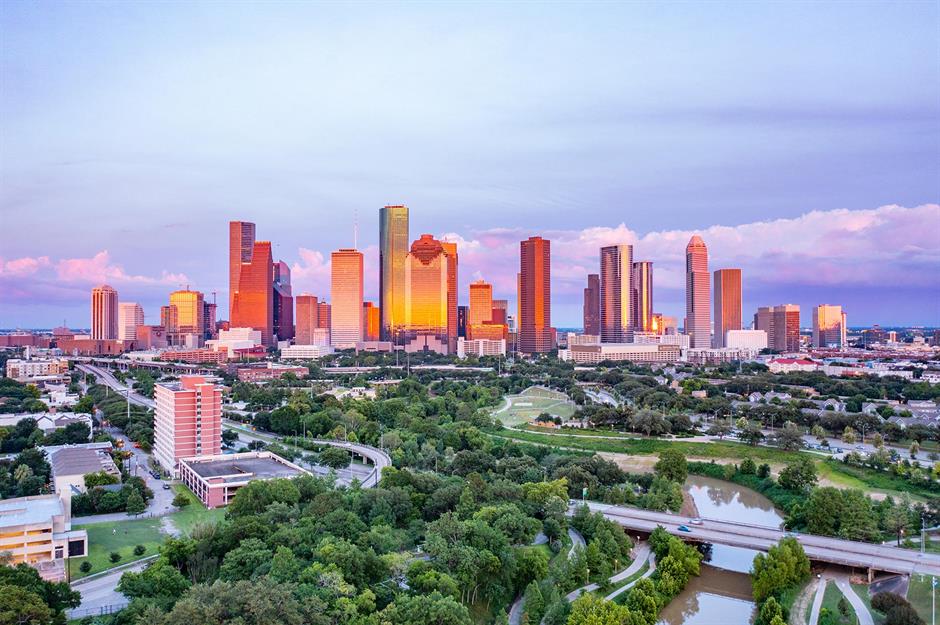
Greater Houston, which encompasses the Houston-Pasadena-The Woodlands metro area, is among the fastest-growing regions in the United States. In 2025, Houston led the nation in new home construction, reflecting both strong population growth and housing demand. Typical home prices in the area are about $317,000, relatively affordable compared to many major metros.
However, that affordability comes at a cost. Homeowners in Greater Houston face steep insurance premiums, averaging $4,755 per year, resulting in a median premium-to-market value ratio of 1.5%, one of the highest in the country.
Houston-Pasadena-The Woodlands: $764.3 billion in real estate at risk
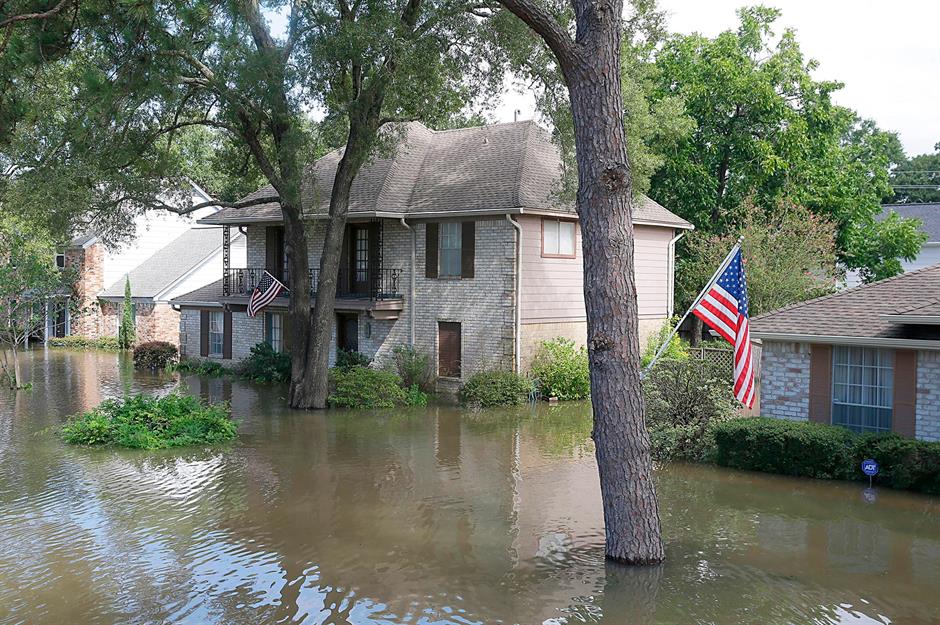
This image shows the devastating flooding that struck homes in Houston's Lakeside Estate during Hurricane Harvey in 2017. The Greater Houston area regularly faces extreme flooding and wind events, which contribute to higher insurance premiums. In 2024, Hurricane Beryl made landfall in the region, causing fatalities and up to $4.5 billion in property damage.
Realtor.com's study, which used data from climate risk financial modeling platform First Street, found that 100% of homes in the region are at risk of significant wind damage, representing a total market value of $764.3 billion. Meanwhile, 12.1% of the market value is at risk of severe flooding.
9. Tampa-St. Petersburg-Clearwater, Florida: 1.7% premium-to-market ratio
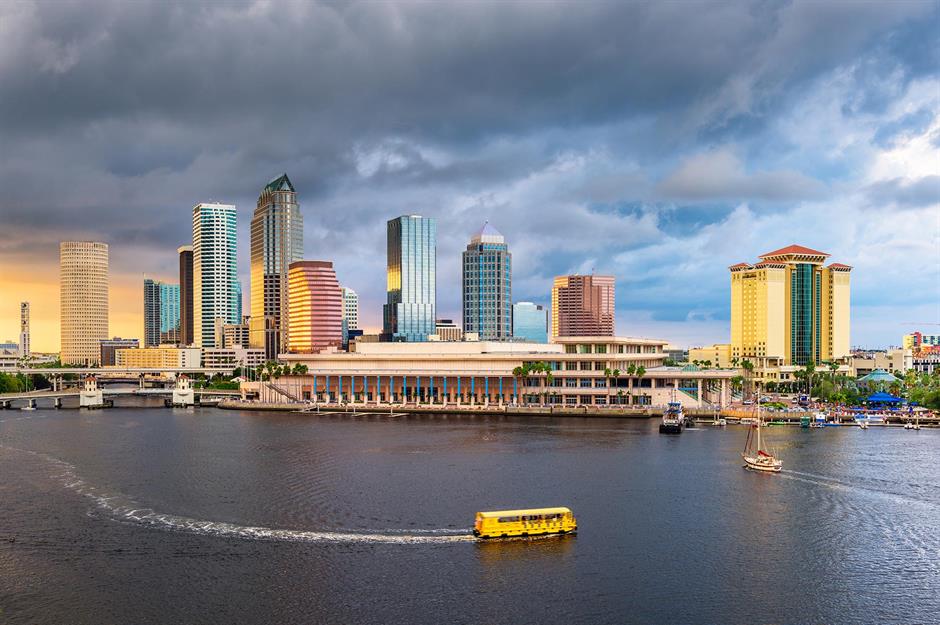
A popular tourist destination, the Tampa-St. Petersburg-Clearwater region is known for its dazzling coastline and cosmopolitan atmosphere. The area, commonly called Tampa Bay, has seen steady population growth over the years, drawing residents with its strong economy and beach-oriented lifestyle.
The Tampa Bay market has dipped over the past 12 months, with the median home in 2025 priced at around $390,900. Despite the cooling property market, insurance remains expensive. The typical homeowner pays $6,645 annually, the equivalent of 1.7% of a typical home’s value.
Tampa-St. Petersburg-Clearwater: submerged suburban streets
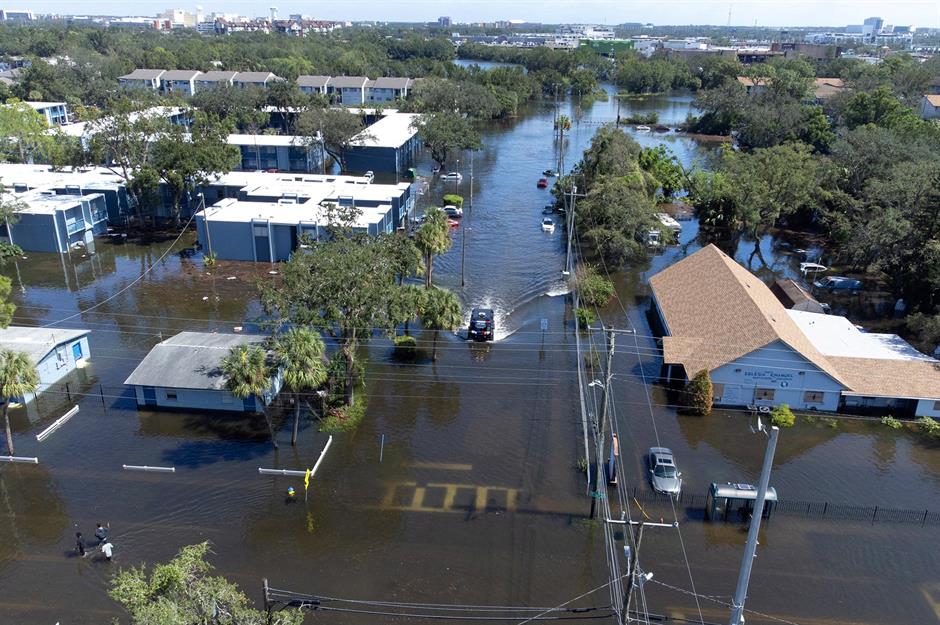
Like Greater Houston, Tampa Bay has faced increasingly volatile weather. About 25.6% of homes are vulnerable to severe flooding, while the region's entire housing stock – valued at $459.7 billion – is at risk of potentially devastating wind damage every year.
In recent years, the area has been crippled by Hurricane Ian in 2022, followed by Hurricanes Helene and Milton in 2024. This image shows the aftermath of Hurricane Milton in October of that year. What was once an ordinary suburban street became a waterway with houses and cars submerged. In Tampa alone, roughly 6,500 homes were damaged, with at least 65 destroyed.
8. Tulsa, Oklahoma: 1.7% premium-to-market ratio

Tulsa, Oklahoma's second-largest city, is home to around 415,500 residents. Renowned for its striking Art Deco architecture, a legacy of its days as the "oil capital of the world," the city has a vibrant arts scene and a lower cost of living than many other metro areas in the US.
Homes in Tulsa are relatively affordable, with typical values around $230,530. However, annual insurance premiums average $3,919, or 1.7% of a home's value, which is high compared to property prices. These elevated costs stem from Tulsa's location in the heart of Tornado Alley, a region notorious for powerful and destructive winds.
Tulsa: in the path of the storm
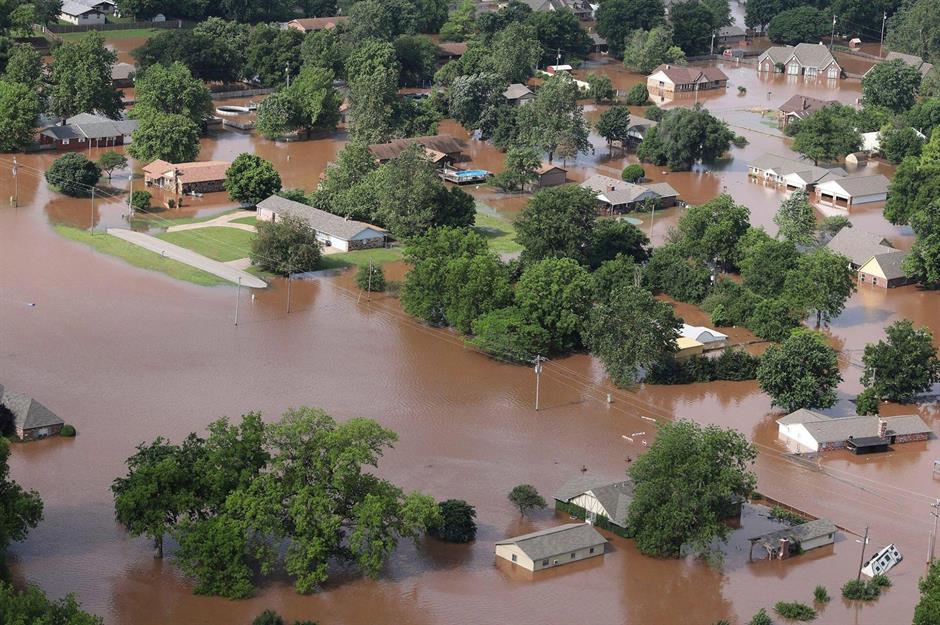
While Tulsa isn't hit by tornadoes as frequently as other Oklahoma cities, it lies in a storm-prone corridor that experiences unusually high levels of extreme weather each year. Since 1996, more than 30 of the nation's most expensive natural disasters have struck the area, including severe winds, hail, flooding, tornadoes, heatwaves, and wildfires.
The effects of severe flooding in Tulsa near the Arkansas River are pictured here in May 2019. That same month, the National Weather Service issued 122 tornado warnings across Oklahoma, most concentrated in Tulsa and the northeast of the state.
7. North Port-Bradenton-Sarasota, Florida: 1.7% premium-to-market ratio
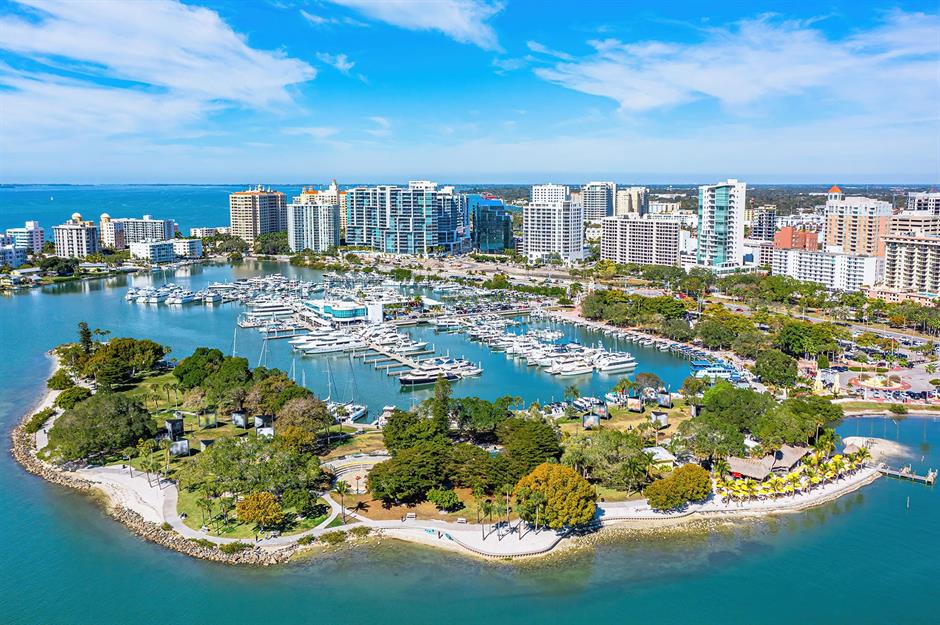
North Port-Bradenton-Sarasota, referred to as the Sarasota metro area, is a region of breathtaking beaches, varied cultural attractions, and tranquil waterfront living. A strong job market and low unemployment rate continue to attract newcomers to the area.
What's less appealing for prospective residents, however, is the frequency of tornadoes, hurricanes, tropical storms, and flooding. As a result, Sarasota metro homeowners pay steep home insurance premiums, averaging about $7,657 a year, which is 1.7% of the median property value of $450,401.
North Port-Bradenton-Sarasota: at the mercy of the elements
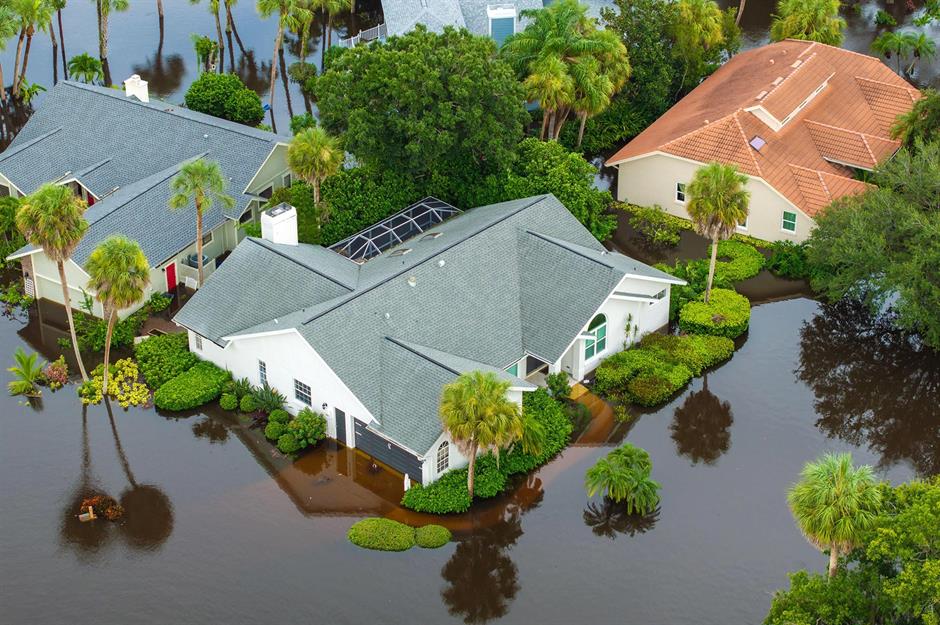
Here, you can see the surreal fallout of Hurricane Debby, which unleashed a catastrophic tropical storm over Sarasota Bay in August 2024. Floodwaters swept through neighborhoods, inundating homes and causing widespread destruction. Across Sarasota County, property damage was later estimated at around $57.9 million.
According to First Street's research, every home in the Sarasota metro area faces exposure to devastating winds, particularly from hurricanes. The region is also highly susceptible to flooding, with 37.6% of homes projected to experience flood events within the next 30 years.
6. Palm Bay-Melbourne-Titusville, Florida: 1.7% premium-to-market ratio

Situated on Florida's Space Coast, the Melbourne metro area serves as a major center for America’s space program. Alongside its aerospace roots, the region – which covers the cities of Melbourne, Palm Bay, and Titusville – is home to a thriving coastal ecosystem teeming with wildlife.
The region's waterfront is both a blessing and a burden. While it offers natural beauty and outdoor recreation, extreme weather frequently batters the shoreline, driving home insurance costs to around $6,172 for a typical $363,076 property. That means insurance would cost around 1.7% of a home's value each year.
Palm Bay-Melbourne-Titusville: homes swallowed by the sea
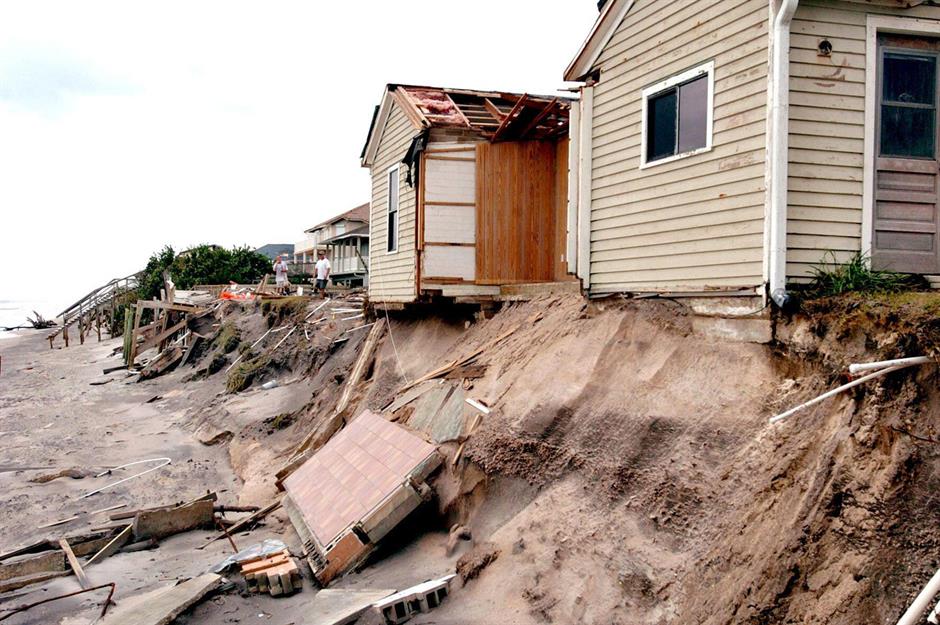
The Melbourne metro area endures relentless, destructive winds, placing 100% of its housing stock – worth some $98.2 billion – at high risk. Hurricanes frequently bring flooding to this part of Florida as well.
Like many coastal communities vulnerable to powerful storms, Melbourne regularly endures tidal surges that accelerate coastal erosion. This photo from 2004 shows homes teetering on the edge of the sandbank, after a surge from Hurricane Frances swallowed a large section of the shoreline. More recently, a homeowner on the same stretch of coast lost 7.6 meters of backyard to the ocean after Hurricane Nicole struck in 2022.
5. Baton Rouge, Louisiana: 2% premium-to-market ratio
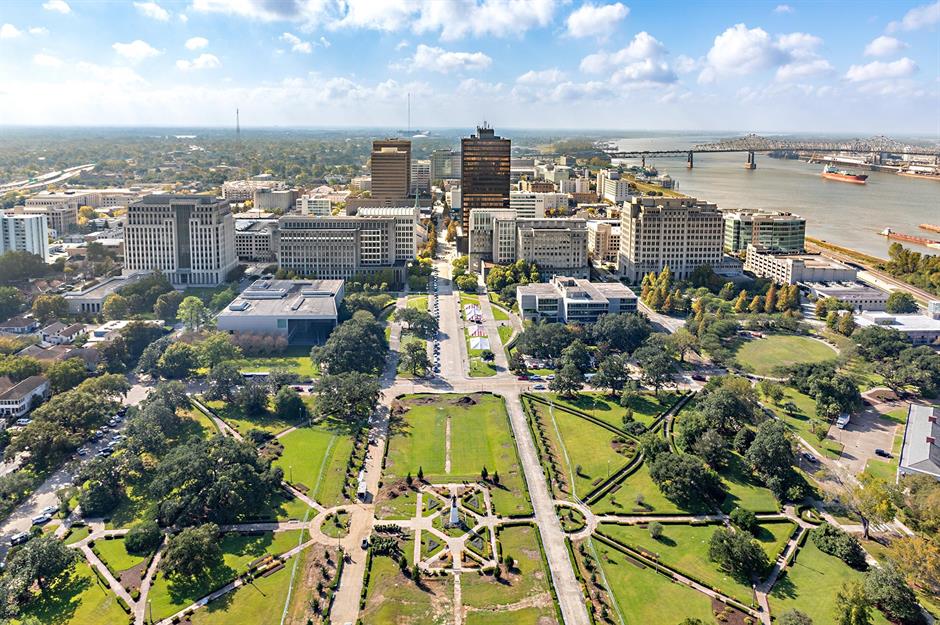
Baton Rouge, the capital of Louisiana, has long been a popular destination among tourists and home movers due to its eclectic arts and culture scene and lively calendar of festivals.
Real estate here is on the affordable side, with typical homes around $233,600. But home insurance premiums may make the area unaffordable for some, averaging about $4,672 a year, or 2% of a home's worth. Perched on the banks of the Mississippi River, the city experiences its share of major weather events, contributing to the elevated cost of coverage.
Baton Rouge: inundated by flooding and high winds
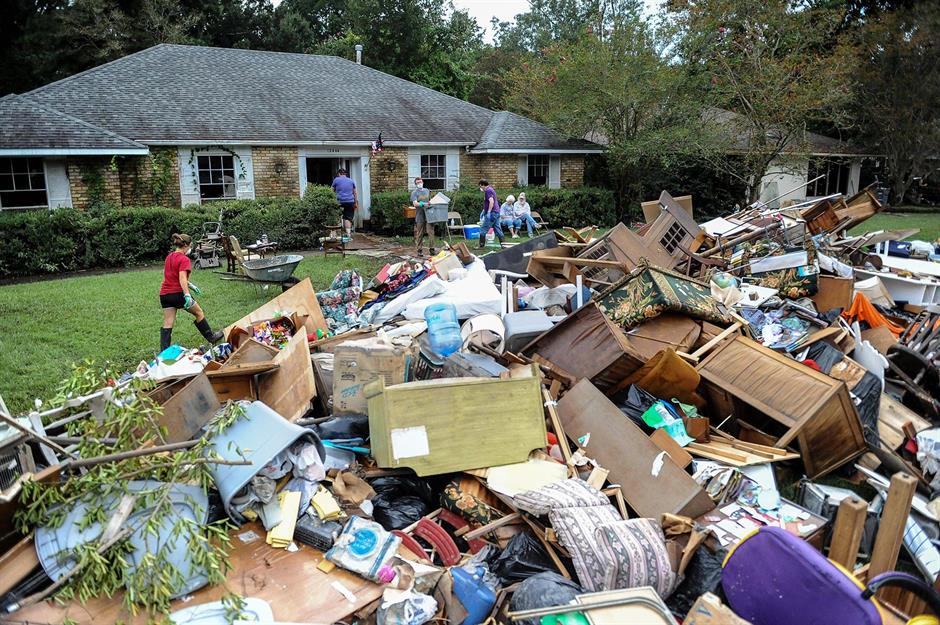
Here, water-damaged furniture and belongings are piled up in a front yard in Baton Rouge, following a spate of severe flooding in 2016. 13 people lost their lives across Louisiana, and residential property damage in East Baton Rouge Parish alone totaled some $1.3 billion during the natural disaster.
In addition to flooding, Baton Rouge faces extreme exposure to destructive high winds, particularly from hurricanes. The city's entire housing supply, worth about $70.1 billion, is vulnerable to wind damage. Historically, the region has endured the full force of storms such as Hurricane Andrew and, more recently, Hurricane Ida in 2021.
4. Oklahoma City, Oklahoma: 2% premium-to-market ratio
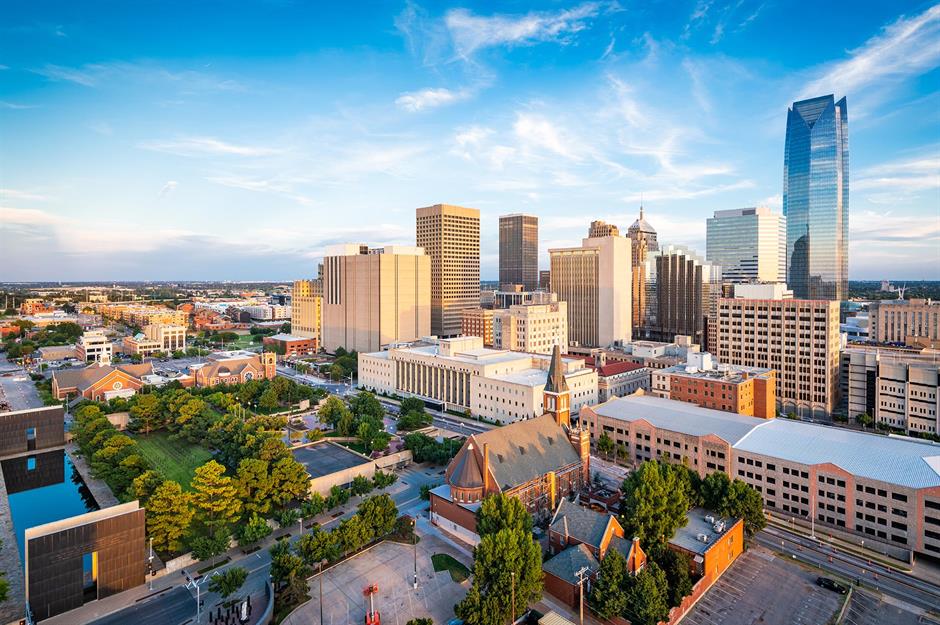
Steeped in its Western past, Oklahoma City, the capital of its namesake state, blends modern urban living with cowboy culture. A historic stop along Route 66, it attracts visitors from across the country and continues to see steady population growth as more people choose to call this unique city home.
The median market value of homes in Oklahoma City is a modest $236,889. Unfortunately, its proximity to one of America's most disaster-prone regions hikes up insurance costs. Homeowners pay around 2% of a typical home's value in premiums, the equivalent of $4,738 annually.
Oklahoma City: situated in the heart of Tornado Alley
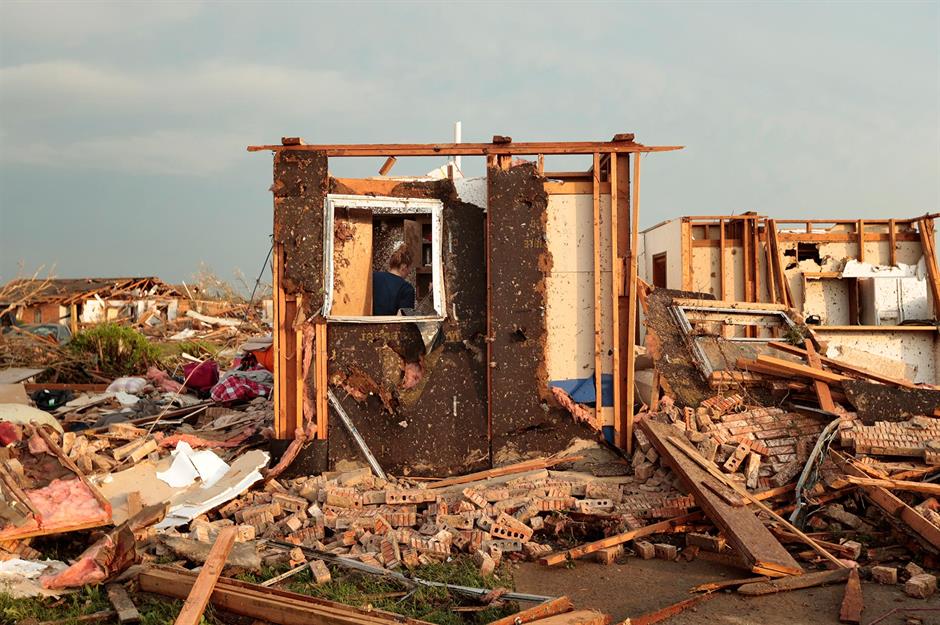
As well as enduring destructive flash flooding in more recent years, Oklahoma City lies in the heart of the infamous Tornado Alley. Over the decades, deadly twisters have repeatedly struck the metro area, upending lives and leaving immense damage in their wake.
In 2013, a powerful tornado tore through the southern outskirts of Oklahoma City, obliterating entire neighborhoods. This image shows the remains of a house in Moore, one of the worst-affected suburbs. The storm left 24 people dead, destroyed 300 homes, and caused an estimated $2 billion in property damage.
3. Cape Coral-Fort Myers, Florida: 2.2% premium-to-market ratio

Punctuated by scenic canals, the Cape Coral-Fort Myers region – commonly called the Fort Myers metro area – is a striking coastal spot where white-sand beaches meet vibrant downtown districts. Many homes enjoy direct Gulf of Mexico access, making it a haven for boating and watersports enthusiasts.
But this idyllic lifestyle comes at a price: the region is highly susceptible to flooding and severe winds. Insurance premiums have surged in response, prompting some residents to relocate. For a typical home worth $393,147, coverage costs about $8,649 per year, roughly 2.2% of the property's worth.
Cape Coral-Fort Myers: exposed to nature's wrath
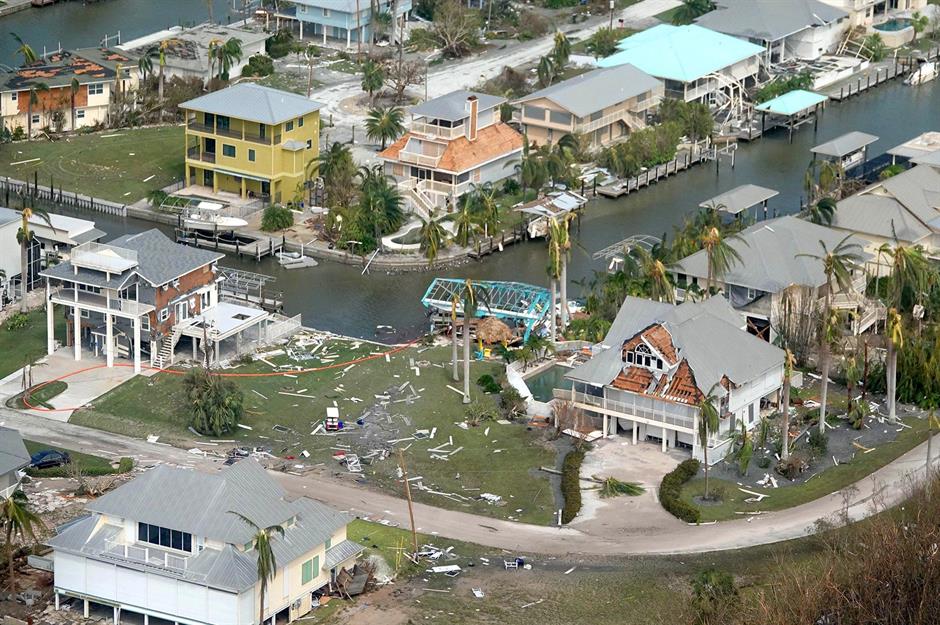
A byproduct of its scenic network of winding waterways, the Cape Coral-Fort Myers area faces widespread flood exposure. According to First Street's data, 89.5% of homes in Cape Coral alone are at risk of flooding over the next 30 years. Realtor.com’s research also shows that all real estate in the wider metro district, valued at $168 billion, is vulnerable to extreme wind.
Shown here, Hurricane Ian left a trail of destruction across Cape Coral in 2022. The force of the wind peeled away roofs and covered neighborhoods in debris, while canal-front properties were flooded by the powerful storm surge. Other major hurricanes to hit the area include Irma in 2017 and Charley in 2004.
2. New Orleans-Metairie, Louisiana: 3.6% premium-to-market ratio
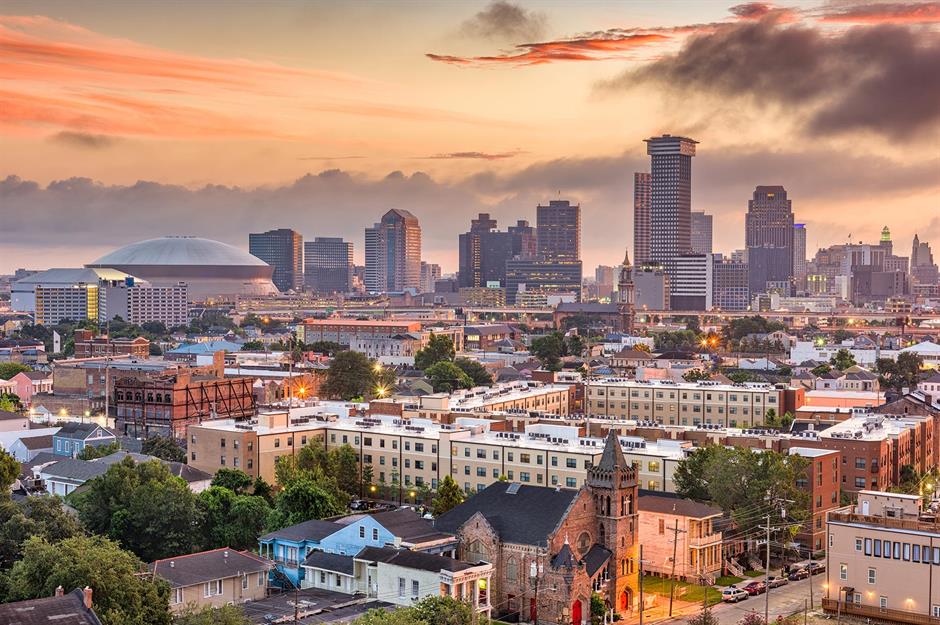
The New Orleans-Metairie region is an enchanting patchwork of historic architecture, jazz-filled streets, and Creole cuisine. Famed for its Mardi Gras parades and strong sense of community, the area's deep cultural roots and enduring traditions give it a character unlike anywhere else.
However, life in the Big Easy isn't always carefree. Homeowners pay about $8,328 annually to insure a median-priced home worth $231,328 – a premium-to-value ratio of 3.6%. The high rates reflect the city’s geography. Much of New Orleans lies below sea level, and the loss of wetlands has weakened its natural storm defenses. About 88% of homes face severe flood risk, while all properties are exposed to extreme winds.
New Orleans-Metairie: sinking further below sea level
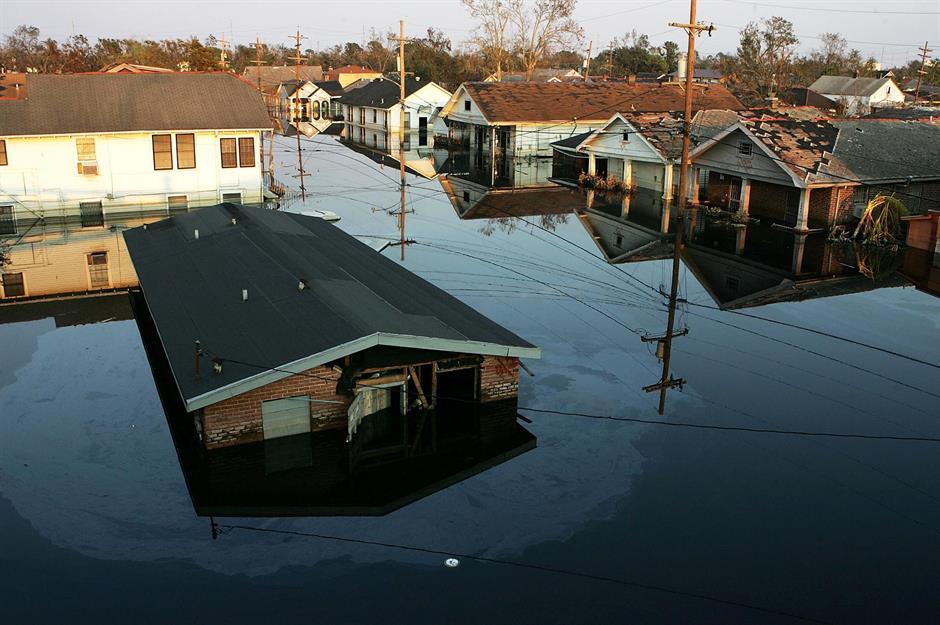
Hurricane Katrina in 2005 remains the most devastating natural disaster to hit New Orleans. The storm pummeled the city with fierce winds before storm surges breached levees meant to prevent flooding. Around 80% of New Orleans was submerged, turning residential streets like this into lakes. Nearly 1,400 lives were lost, and 300,000 homes were destroyed or left uninhabitable, causing over $100 billion in property damage.
Sadly, extreme weather threats may worsen. A 2025 study in the Science Advances journal found that the ground elevation in parts of the city is sinking by more than an inch (2.5cm) each year.
1. Miami-Fort Lauderdale-West Palm Beach, Florida: 3.7% premium-to-market ratio
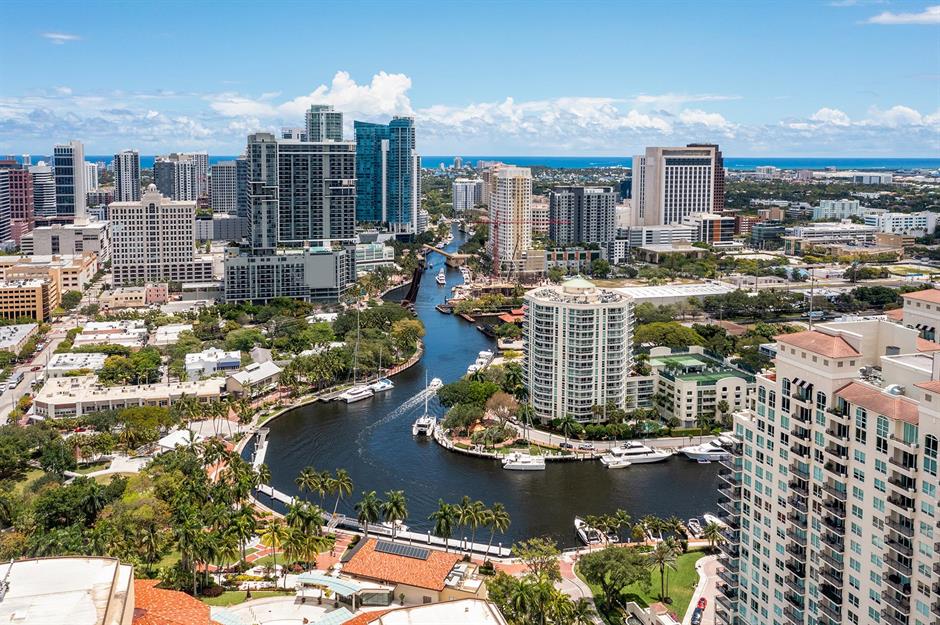
The Miami-Fort Lauderdale-West Palm Beach region, referred to as Greater Miami, is known for its stunning beaches, vibrant nightlife, and waterfront recreation. Yet life in this coastal paradise can be quickly upended. Positioned on a low-lying peninsula between the Atlantic and the Gulf, the area sits directly in the path of powerful storms, making it one of the nation's most hurricane-prone regions.
The combined threat of flooding and wind damage has pushed home insurance premiums to the highest in the US. A typical $614,000 home in Greater Miami carries a staggering insurance cost of $22,718 a year – around 3.7% of its value.
Miami-Fort Lauderdale-West Palm Beach: unprecedented weather events
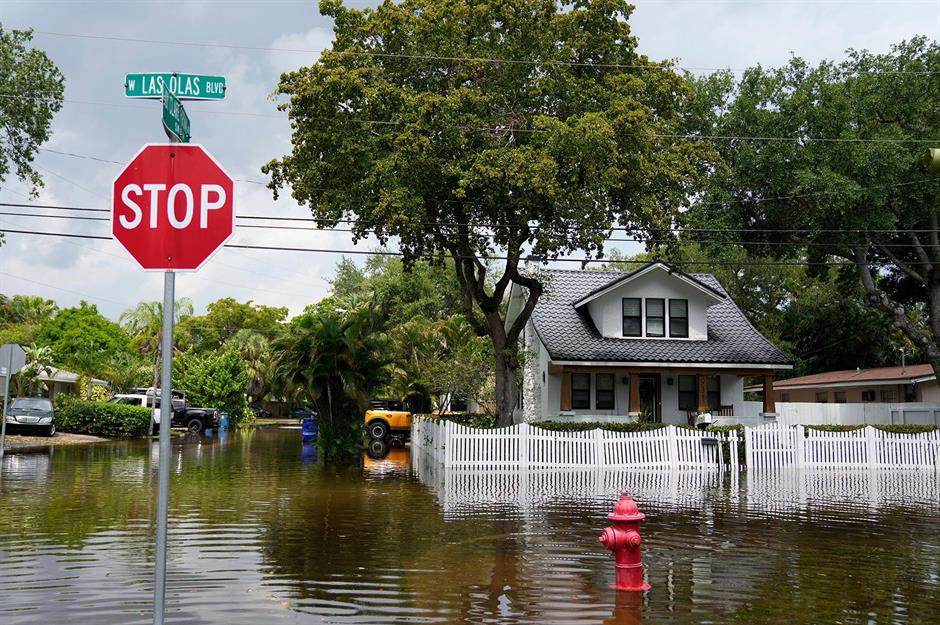
Pictured here, floodwaters are seen slowly receding from a home in Fort Lauderdale's Sailboat Bend neighborhood in April 2023, after a once-in-a-millennium rainfall event inundated the city. As sea levels continue to rise and the ground subsides, such extreme flooding is becoming increasingly common.
The region's vulnerability is not new. In 2017, storm surges from Hurricane Irma flooded downtown Miami, while in 2005, Hurricane Wilma tore through Fort Lauderdale and Miami, causing more than $20 billion in damage across South Florida. Today, every home in Greater Miami is considered at risk from severe winds.
Loved this? Discover more real estate stories from around the world
Comments
Be the first to comment
Do you want to comment on this article? You need to be signed in for this feature